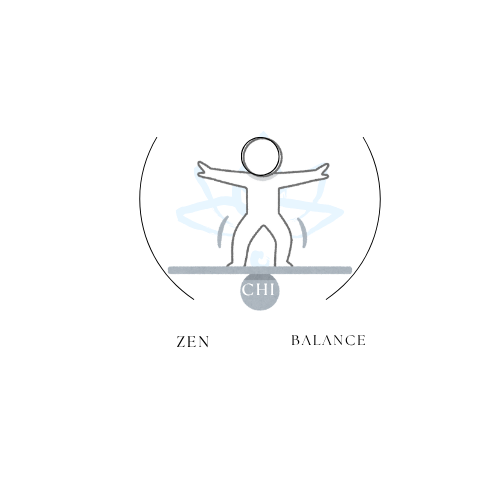
Stress Relief Microbreaks That Reset Your Nervous System
Share
Updated on: 2025-10-19
Table of Contents
- Stress relief for everyday life: a gentle introduction
- Step-by-step guide to stress relief you can try today
- Practical tips for stress management and stress reduction
- FAQs about stress relief and daily calm
Stress relief for everyday life: a gentle introduction
Stress relief can feel more approachable when it is simple and kind to your schedule. In the first few minutes of your day, or during a short break, you can practice small actions that encourage calm. These actions do not need to be perfect or long. With steady attention to stress management, many people notice more clarity and steadier energy. The ideas here are easy to adapt and support stress reduction without complex routines.
This article focuses on relaxation techniques that fit real life. You will find a short routine you can follow, plus mindful options such as light breathing, soft stretches, and mindfulness meditation. If you are juggling work, study, or caregiving, the goal is not to add pressure. Instead, it is to invite brief moments that reset your attention. If you would like more supportive reading, you are welcome to explore the Blog for additional guides and ideas.
Step-by-step guide to stress relief you can try today
The steps below form a short routine that you can complete in a few minutes. Feel free to adjust the length to match your needs. A timer is optional; your comfort matters most.
-
Pause and notice your starting point (30 seconds). Sit or stand with your feet grounded. Gently scan your body from head to toe. Notice areas that feel tight or busy. There is nothing to fix. Simply acknowledge how you feel. This quiet check-in makes the rest of the routine easier to follow.
-
Practice an easy breathing pattern (1 minute). Inhale through the nose for a count of four, pause for one, exhale through the mouth for a count of six. Repeat four to six cycles. This relaxed breath can support stress relief by inviting a slower pace. If counting feels distracting, simply lengthen your exhale a little.
-
Release shoulder and jaw tension (1 minute). Roll your shoulders forward and back with slow circles. Unclench the jaw and soften the tongue. A gentle open-and-close motion can ease face tension. Many people carry stress in these areas, so even a brief reset can feel helpful.
-
Try a short mindfulness meditation (2 minutes). Sit comfortably and rest your attention on your breath or a neutral sound, such as a fan. When your mind wanders, kindly return to the focus point. This practice supports stress management by encouraging awareness without judgment.
-
Lower the shoulders and lengthen the spine (30 seconds). Imagine space between each vertebra. Rest your hands on your lap or desk. Feel the chair or floor supporting you. A stable posture can encourage a calmer mind.
-
Choose one tiny next step (30 seconds). Name one action you will take after this pause. Keep it small: send one email, drink water, or stand and stretch. This gentle focus can reduce overwhelm and support stress reduction throughout the day.
When to use these steps at work or study
Short, predictable routines are useful during work or study because they respect your time. You might complete the breathing pattern before a meeting or exam to find a steadier pace. If stepping away is not possible, you can still practice quiet, longer exhales while reading or typing. Many people prefer a two-minute version between tasks to support quick stress relief techniques for work and study without disrupting focus.
How to adapt the steps at home
At home, try the same routine in a comfortable chair, or even while standing at the kitchen counter. Soft background sounds, dimmer lights, or a warm beverage can encourage relaxation techniques that suit the environment. If you keep a simple note on the fridge or phone with the steps, it becomes easy to restart when the day gets busy. For a friendly overview of our approach to calm routines, you can visit the About page.
Practical tips for stress management and stress reduction
These tips are small, flexible, and designed to be kind to your schedule. Select one or two at a time. Consistency often feels more supportive than intensity.
- Name your current state. A simple phrase like “My mind is busy” or “My body feels tense” can bring clarity. Noticing without judgment often makes the next step clear.
- Set two gentle anchors in your day. For example, breathe for one minute after you wake and before you close your laptop. Anchors help stress relief become a steady habit instead of an extra task.
- Use mini movement breaks. Stand, stretch your arms overhead, and rotate wrists and ankles. Even brief movement can pair well with mindfulness meditation or quiet breathing.
- Create a “calm corner.” Designate a small space with a lamp, a comfortable chair, and a notebook. Keeping it simple removes decision fatigue and supports stress management.
- Protect a short wind-down routine. Choose two or three steps, such as dim lights, reduce screen brightness, or read a few pages of a gentle book. Many people find that natural stress relief remedies for better sleep begin with a predictable wind-down.
- Try a visual pause. Look at a distant point for 20 seconds to ease screen fatigue. This supports relaxation techniques that refresh attention during busy hours.
- Practice “one gentle thing.” When the day feels full, ask, “What is one gentle thing I can do right now?” Drink water, open a window, or tidy a small area. This question reduces pressure and supports stress reduction step by step.
- Pair calming with daily habits. Attach a two-minute breathing pause to actions you already take, such as making tea or washing hands. Habit pairing can make stress relief feel natural.
- Use friendly boundaries. Short phrases like “I will reply after lunch” help pace your day. Clear boundaries are kind to you and to others.
- Keep a “done” list. Writing what you finish, even tiny items, can soften the sense of overload. This list encourages momentum during work or study.
If you enjoy building gentle routines with supportive tools, you may like to browse All to discover simple accessories that complement your quiet moments. Choose items that feel comfortable and easy to use.
FAQs about stress relief and daily calm
What are the most effective stress relief techniques?
“Effective” can be personal. Many people appreciate short breathing practices with longer exhales, soft shoulder and neck stretches, and brief mindfulness meditation. Others prefer grounding actions like holding a warm cup, taking a short walk, or listening to gentle sounds. It can help to try one approach for a few days and notice how you feel afterward.
How can I relieve stress quickly at home?
A quick approach is to set a two-minute timer. Sit comfortably, place both feet on the floor, and extend your exhale slightly. Then release jaw tension and stretch your arms overhead. If helpful, add a simple phrase such as “This is my pause.” Small actions like dimming lights or opening a window can also create a calmer setting.
What are some natural stress relief remedies for better sleep?
Many people find that gentle wind-down cues help. Consider consistent lights-out timing, slower breathing patterns in bed, and a short list of calming tasks, such as preparing tomorrow’s outfit or journaling for two minutes. Reducing bright screens before bed may also support a quieter mind. The goal is not perfection, but a predictable cue that signals rest.
Are quick stress relief techniques for work and study different?
The core ideas are similar, but the setting may change what feels practical. At work, silent breathing and posture resets fit well at your desk. During study, short movement breaks, a walk around the room, or a timed pause between subjects can feel supportive. The key is to keep each pause brief and repeatable so it fits your schedule.
If you would like friendly help choosing a simple routine or tool, you are welcome to reach out through Contact. We are glad to assist with thoughtful suggestions.

I'm a passionate curator at Zen Chi Balance, dedicated to spreading calm, harmony, and mindful living through faith-inspired lifestyle products. I help craft meaningful experiences for our global community of mindful shoppers.
The content provided is for informational and inspirational purposes only. It is intended to encourage personal growth, mindfulness, and balance in daily life. Zen Chi Balance does not provide medical, legal, or professional advice. For specific concerns or guidance, please consult a qualified professional. Visit us at www.zenchibalance.com for more inspiration and resources.
